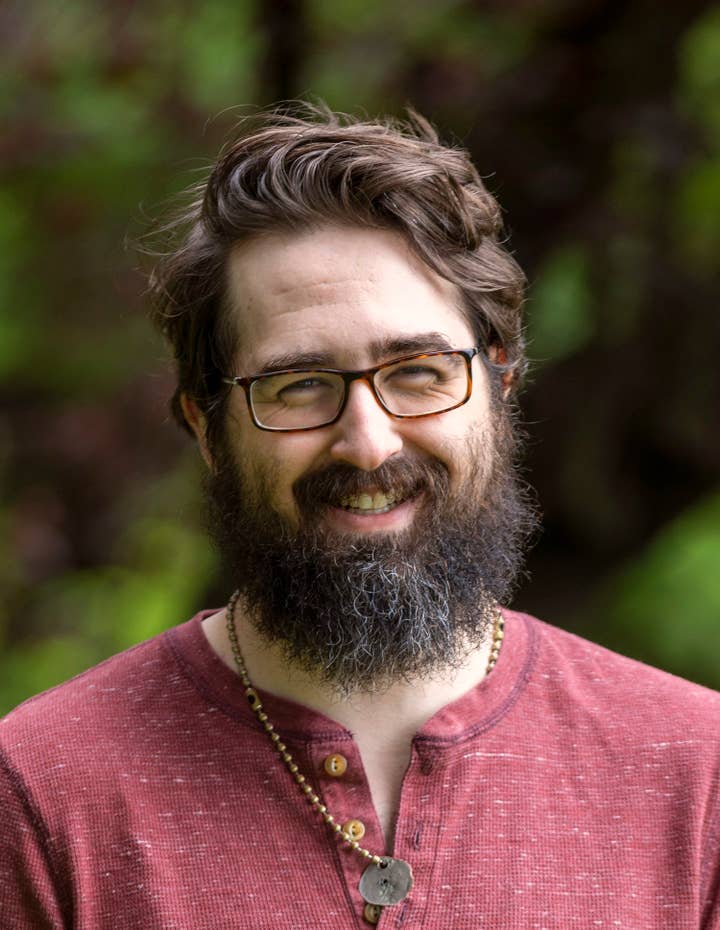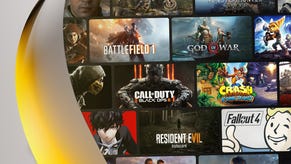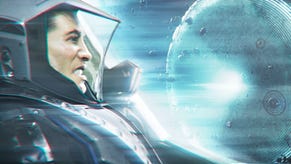Pacific Drive's road to reshaping the survival genre
Alex Dracott shares the story behind Ironwood Studio's debut Pacific Drive, and how it forged a unique relationship with a non-sentient station wagon
Most developers focus on just one genre for their first title, but Ironwood Studios decided to create a fresh take on two for its debut game, Pacific Drive.
At first glance, Pacific Drive – which launches today on PC and PS5 – seems like a typical driving game, primarily focused on exploring the Pacific Northwest in a station wagon. But players will soon come to realise that all is not what it seems.
At its core, the game is all about survival. Set in 1998, players are tasked with escaping the apocalyptic environment of the Olympic Exclusion Zone which becomes more hostile as the game progresses.
"It's this weird station wagon game set in the Pacific Northwest," Ironwood Studios founder and creative director Alex Dracott tells GamesIndustry.biz. "It's surreal, it's a survival game, but it's also a little bit spooky. It's got different elements that are very exciting."

Pacific Drive is as much a love letter to the Pacific Northwest as it is a game inspired by Dracott's childhood. He recalls "foundational memories" of road trips and camping in his family's station wagon, which compelled him to go on trips by himself when he was older to visit abandoned sites, partly to collect references for art and partly to just explore.
"It was while I was doing that that I started getting this sense of there being something about the woods out there and being alone on the road," he explains. "There's an emotional connection that you end up forming with whoever you're travelling with, whether it's a friend or a car."
Which is why, Dracott explains, they decided to lead with a silent protagonist. There are a few NPCs that talk to players through the radio, but he highlights the importance of "removing as many filters as we possibly could to connect you with the car."
That's the focal point of Pacific Drive: forming a bond with the car that's uniquely personal to the player.
"We want you to play you in this game rather than a very scripted, fleshed out specific character in the same way that when you find this old station wagon, you stumble across it," Dracott says. "It's not given to you by someone else, it's not a gift with its own history. It's just there – the history is what you make of it."
The team experimented story-wise at the beginning of development, with the initial plot being that the player was going to save the car from being buried under rubble. But the scope of Pacific Drive's narrative changed once playtesting began.
"Players would remember moments that were much more systemic and organic, like forgetting to put the car in park and having to chase after it, all the while knowing a storm is coming and they have to get back to the garage," Dracott recalls. "Those were the foundational attachment pieces and we really leaned into that as much as we could."

It was Pacific Drive's game director Seth Rosen who suggested that the key to the game was the ability for players to physically handle and remove things from the car to forge a unique connection to it.
"We're really satisfying a traditionally hard thing to do, which is to make a secondary character or NPC in a game believable and to organically respond to the situation," he says. "Obviously it's a car, so the interactions are a lot more mechanical. But from there, it was a matter of experimenting with how many different ways we can reinforce it."
Dracott cites Pacific Drive's quirk system, a detective-like mini game where players have to diagnose randomised issues with the car and fix them, as an example of this.
"We don't know what's going to go wrong with your car when you play the game," he explains. "So it's mechanics like that which further that systemic relationship between the player and the car."
But it wasn't always this way. To find the vibe of Pacific Drive during the initial prototyping stage, gameplay focused solely on driving around the woods of the Pacific Northwest and listening to music.
"We're satisfying a traditionally hard thing to do, making a secondary character or NPC believable and organic"
"But once we did that, we found that we wanted to add those interactions that are pretty organic with the car, like the ability to turn it on and off, get in and get out, and give it gas," Dracott explains.
"We really wanted to satisfy this fantasy of it [being] you and your car and you're this mechanic that is capable of at least taking care of and working on the car to keep it running."
These interactions became the foundation for the survival aspect of the game, twisting basic needs to fit the car instead of the player character. So instead of maintaining things such as hunger, temperature, and stamina, players need to make sure the car is fueled, its battery is charged, flat tires are fixed, and the engine is running.
However, this level of interactivity added a layer of complexity during development. Dracott compares this process to car-centric games that already have an engine and process of supporting "hundreds of different cars that all feel different and unique."
"For us, it was one car that can be customised in numerous ways, but it still had to feel like an old station wagon," he notes, adding that the car needed to be "tunable from a design standpoint" that wouldn't overwhelm Ironwood's small dev team, which consists of around 20 people.
"A team of around 20 to 30 people in AA is something that always felt like a very good balance between independent, creative ownership, but also being able to make something a little bigger," he notes.
Dracott founded Ironwood in 2019, having entered the games industry in 2011 working as an environmental/technical artist intern for Sony Online Entertainment in Seattle. He worked with a variety of developers including Sucker Punch, Highwire Games, and Oculus in various artist positions before deciding to form his own independent studio.
It was during this time, Dracott explains, that various third-party software such as Unity and Unreal became readily available, and platforms like Steam opened up to independent developers making it easier to make and share games with players.
"As more of this tech became intertwined and available, it got me thinking that now was the time to start my own studio," he says.
Dracott started building the core Ironwood team in 2020, a month before the pandemic. During this time, Dracott recalls Ironwood being a small team working on prototypes for Pacific Drive and "trying to figure out what the route looked like to ramp up development," which involved talking with different parties about funding.
Despite getting "positive feedback" about the game from potential partners, Dracott explains it was difficult to gauge the studio's progress as by the time they received this feedback, it was during the middle of the pandemic.
By autumn of 2020, Dracott says they figured out the roadmap for the studio and the game. Ironwood started to grow by this point, and they focused on hiring for key roles and have "grown pretty consistently since then."
After the first year, Ironwood grew to ten people with additional contractors and temporary workers – most of whom ended up joining the team – as well as third-party partners for certain departments, such as audio.
"A team of up to 30 people is something that always felt like a good balance between independent, creative ownership and being able to make something bigger"
As Pacific Drive neared the finishing line in terms of development, Dracott explains how Ironwood decided to avoid self-publishing and partnered with Kepler Interactive in 2023. He felt Kepler not only shared their vision for the game, but that they were of a similar size and scope and had experience of working with smaller teams like Ironwood.
"We have an exciting game that has a lot of appeal, but then finding folks that bring in that experience from the publishing side and have that knowledge of distribution and marketing [is important] – things that can really help a game and help us accelerate," he explains.
"We wanted to find a partner that has experience working with teams like us that we could mutually benefit from."
As for his expectations for the game, Dracott feels happy with how Pacific Drive has been received so far following the release of its demo earlier this month – especially seeing players share their unique experiences of the game online and in-person at events like PAX West.
"Moments that happen in the game are always going to be filtered by whoever's playing it," he says. "What [players can experience] legitimately surprises us on a regular basis, and seeing those moments again through the eyes of all these different gamers is awesome."
While there are no firm plans for DLC or a sequel further down the line, Dracott notes that the team has discussed the trajectory of the game at length.
"When you look at Pacific Drive as a whole, I think it's pretty easy to see different ways that it can be expanded as it's a game packed full of interesting anomalies and things to explore and discover."
Sign up for the GI Daily here to get the biggest news straight to your inbox






.jpg?width=291&height=164&fit=crop&quality=80&format=jpg&auto=webp)


